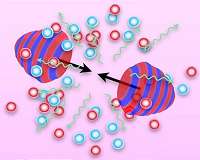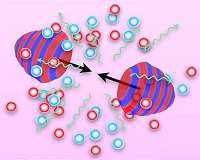The topic of the 2018 Nobel Prize in physics is a method that increases the potency of laser stimulation in many of today’s highest-powered research lasers. As next-generation laser centers seem to push beam power up physicists anticipate a new era for studying plasmas, whose behaviour is influenced by features typically found in holes and the winds from pulsars.
Researchers released a research taking inventory of what forthcoming high-power laser capacities are poised to educate us about relativistic plasmas subjected to strong-field quantum electrodynamics (QED) processes. Additionally, the study that is proposed designs for investigating these happenings.
Hunting in Physics of Plasmas, from AIP Publishing, the article offers a summary of current developments, discusses the present state of the field and presents the physics of plasma in fields. It also highlights open questions and topics which are likely to dominate the attention of folks.
Strong-field QED is a lesser-studied corner of the standard model of particle physics which hasn’t yet been explored at big collider centers, for example SLAC National Accelerator Laboratory or CERN, the European Organization for Nuclear Research, on account of the dearth of strong electromagnetic fields in accelerator settings. With high-intensity lasers, strong areas, which are observed in phenomena like electron-positron pair production and gamma ray emission can be used by researchers.
The group explores the findings could lead to advances in studies of basic physics and at the maturation of electron, ion, positron and photon sources. These findings would be crucial for expanding of scanning technology now that is present on many types, ranging to medical radiotherapy to radiography for homeland security and business.
The QED procedures will lead to dramatically new plasma physics phenomena, like the creation of dense electron-positron pair plasma from near vacuum, complete laser energy absorption by QED procedures, or the quitting of an ultrarelativistic electron beam, which might penetrate a centimeter of lead with a hair’s breadth of laser light.
“What kind of new technology these new plasma physics phenomena could translate is largely unknown, particularly because the field of QED plasmas itself is a kind of uncharted territory in physics,” author Peng Zhang explained. “In the present stage, even adequate theoretical understanding is significantly lacking.”
The group hopes the paper will help bring the attention of more researchers to QED plasmas’ exciting new areas.
Thanks for being here;
We need your help. The SpaceDaily news community continues to grow but revenues have never been more difficult to maintain.With the growth of Ad Blockers, and Facebook – our traditional revenue sources through quality network advertising continues to decline. And unlike many other news websites, we do not have a paywall – with those bothersome usernames and passwords.Our news coverage takes time and effort to release 365 days per year.If you find our news websites informative and helpful then please consider becoming a regular supporter or to now create a one off contribution.
– Advertisement –


